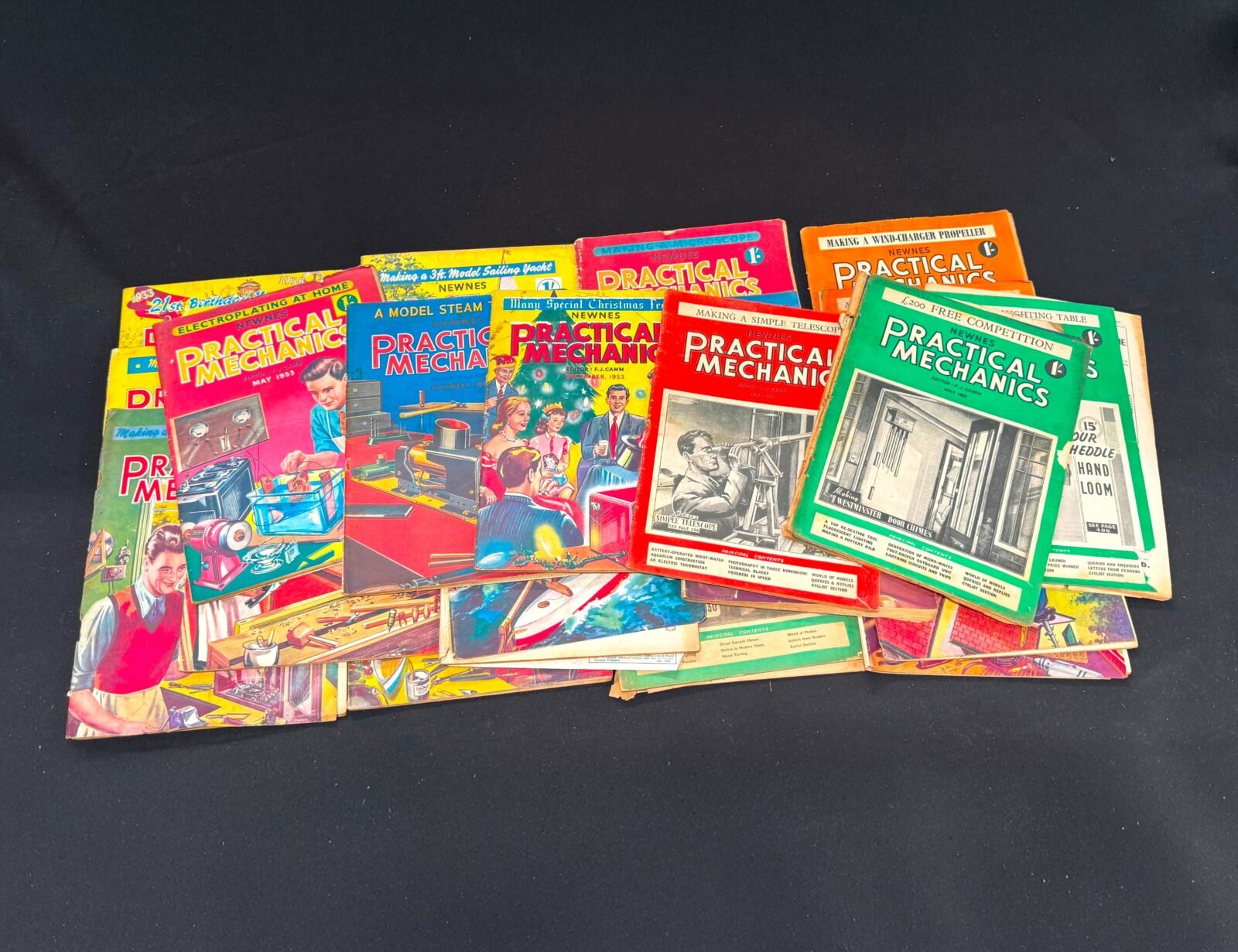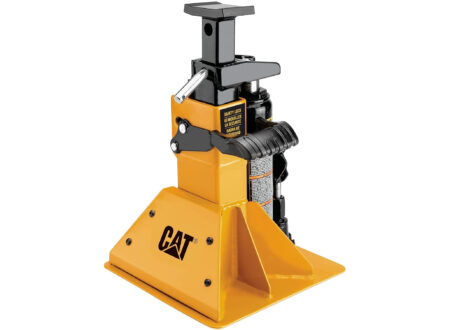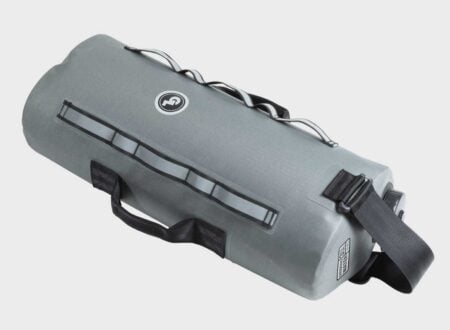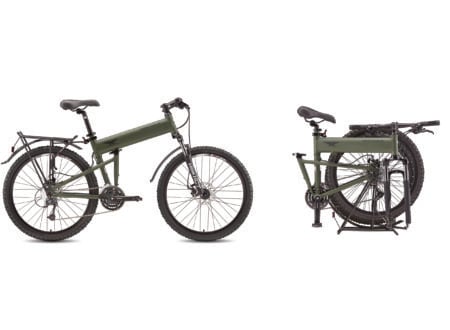This is a collection of 25 copies of Practical Mechanics magazine that date from the late 1940s into the mid-1950s. Surviving copies of these at-home instructional magazine are increasingly rare, and there is an avid collector community surrounding them.
Back in the early-to-mid-20th century, long before the era of cheap goods from Walmart and elsewhere, magazines like this were essential for those who wanted to build their own gadgets at home, or repair the gadgets they already had.
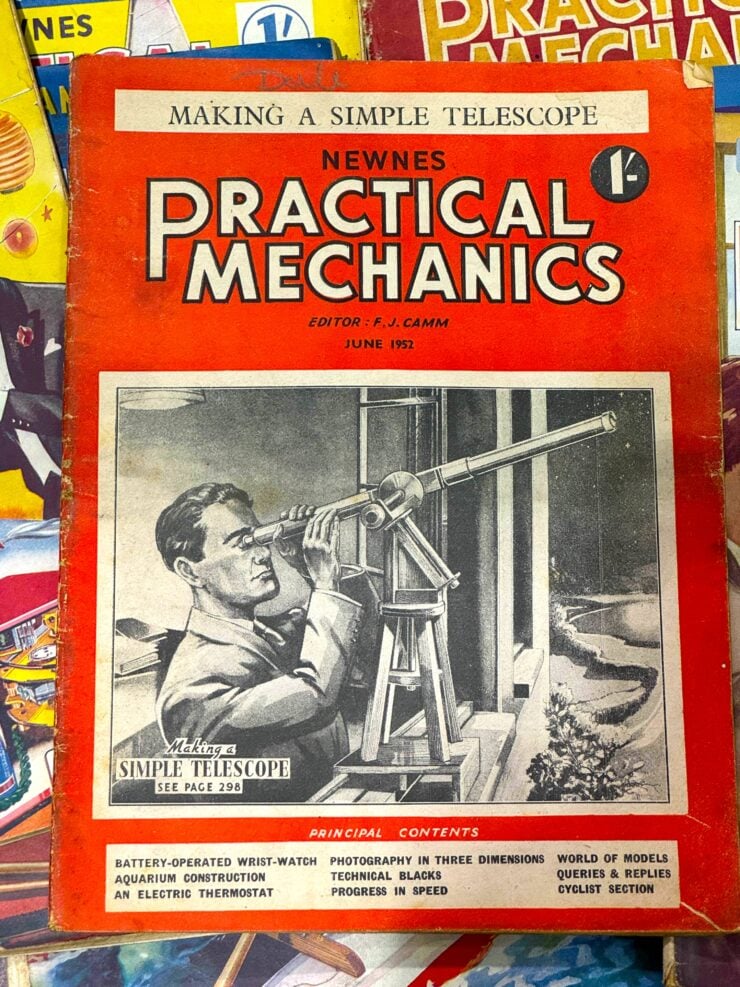

History Speedrun: Practical Mechanics Magazine
Practical Mechanics was first published in October of 1933 by George Newnes Ltd, part of a stable of hobbyist and instructional magazines aimed squarely at British readers with an interest in hands-on engineering and home workshop projects.
Its founding editor was Frederick James Camm, a prolific technical writer and engineer who also launched sister titles including Practical Wireless, Practical Motorist, and Practical Television. Collectively, this group of magazines became known informally as “Camm’s Comics” for their accessible, image-and-text-based approach.
Practical Mechanics was developed in a period when home mechanical work was very much an everyday skill. Britain’s interwar years saw strong public enthusiasm for building, repairing, and modifying things at home, and Practical Mechanics aimed to be the leading guidebook for these endeavors.
The magazine featured articles on making tools, constructing furniture, building small boats, fabricating scientific instruments, and repairing vehicles. Its tone was instructional yet always approachable, encouraging readers to attempt complex projects without specialist training – even readers who were on the younger side.
Notable projects included instructions for making a functioning Geiger counter, a motorized model of the Golden Hind, and even a full-sized airplane for around £25 – excluding the cost of the engine. This combination of the practical and the aspirational helped Practical Mechanics maintain a loyal readership across the country and around the world for decades.
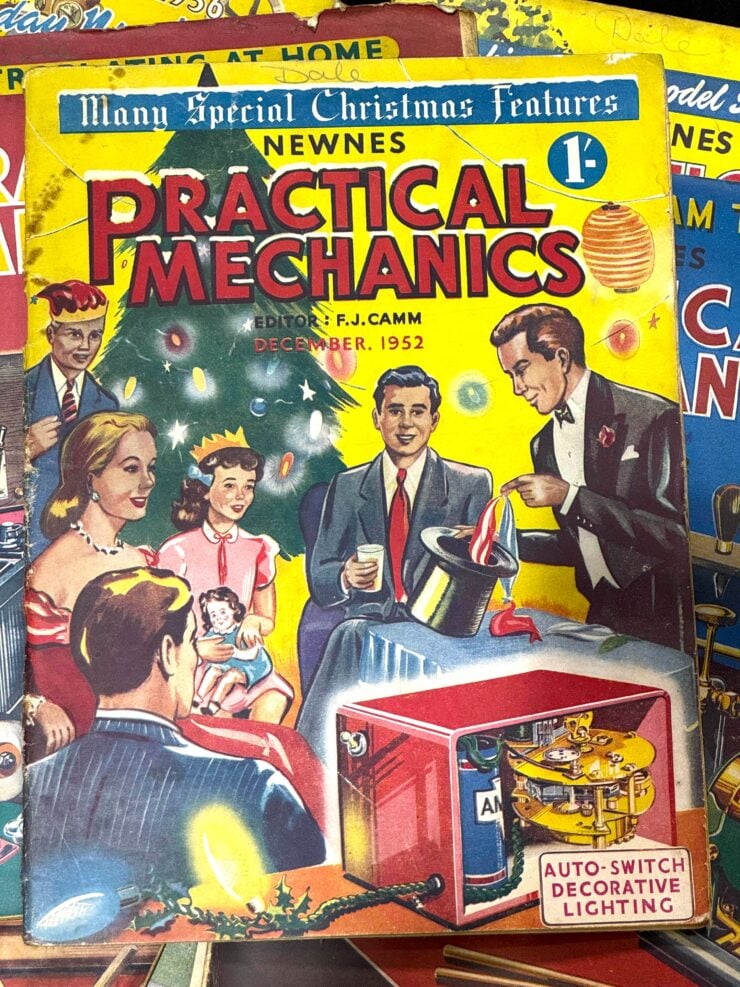

During its first years, Practical Mechanics was printed in black and white, with photographs and line drawings illustrating projects. By the postwar period, color began to appear more often on covers and in selected features, giving it a more modern look. The editors were always careful to keep pace with changing technology, over time they included a range of articles on emerging materials, new tools, and the growing inclusion of electronics in mechanical projects.
Frederick J. Camm remained editor until his death in 1959. By the early 1960s, the editors sought to broaden its appeal beyond traditional workshop projects and in some respects this marked the beginning of the end of the magazine. In September of 1962, the title was changed to Practical Mechanics & Science – due to the growing emphasis on scientific developments, experiments, and educational content alongside the mechanical focus.
Despite these changes, or perhaps because of them, the magazine struggled to maintain its audience in a market facing stiff competition from television, more specialized hobby publications, and the decline in home-based mechanical work as manufactured goods became cheaper.
The final issue was published in August of 1963, ending an impressive 30 year run that spanned 352 issues. Surviving copies of the magazine are now considered highly collectible, and they offer a unique window into the world of mid-century at home mechanical (and electrical) projects.
The Practical Mechanics Magazine Collection Shown Here
The collection of 25 issues of Practical Mechanics magazine you see here dates from 1947 to 1954. It includes issues with instructions on making your own auto-switch decorative Christmas lighting, Westminster door chimes, how to get into electroplating at home, building your own telescope, building your own boat, and more.
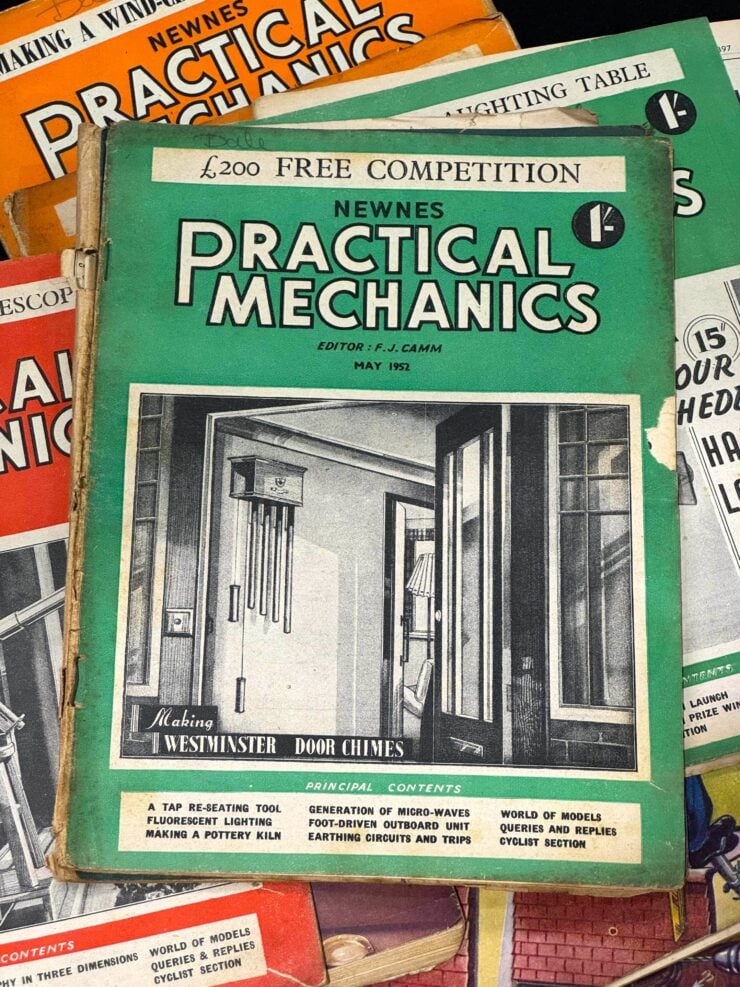

Antique magazine collections like this are always sought after and they often end up in vast private collections. Some buyers also digitize them and upload them so a whole new generation of enthusiasts can read them, and maybe even build a project or two.
This collection will be crossing the auction block with Historics Auctioneers in mid-August with a starting bid of just £5 or roughly $6.8 USD. If you’d like to read more or visit the listing you’ll find it here.
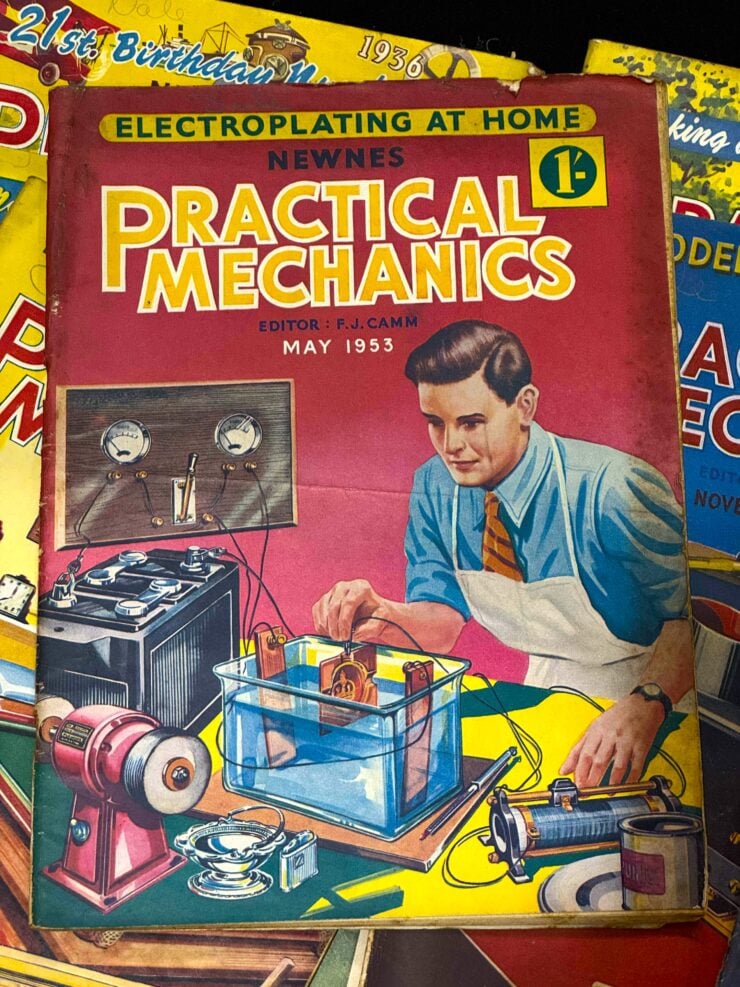
Images courtesy of Historics Auctioneers

